4 Ways to Reduce Marine Logistics Costs in 2023
The global maritime supply chain has, to put it mildly, been tossed about through three turbulent years as the world was swept by the COVID-19 pandemic.
In the immediate aftermath of the initial coronavirus outbreak, whole nations closed their ports and borders, and entire fleets of planes were grounded. Then, as scientists and public health officials learned more about how to prevent, diagnose, and treat COVID-19 infection, demand skyrocketed for shipping of hand sanitizer, masks, and other personal protective equipment (PPE), as well as for ventilators for overrun hospital emergency departments. In the months and years that followed, those able to work from home ordered furniture, equipment, and supplies to fit out their home offices and adjust to homebound family life.
While all this new demand led to record gross revenues for shipping companies, it also dramatically increased complexity and operating costs. In the nearly three years that have followed, labor shortages and quarantines caused historic delays at ports, commercial flights dropped more than 70%, and exacerbated trade imbalances led to massive shortages of containers in key manufacturing regions of the world. All of this impeded and slowed delivery of critical marine spares, equipment, and supplies, while driving up air and sea freight rates astronomically.
Together, we found ways to get you what you needed to keep your fleets safe, able, and sailing, though we know those skyrocketing freight rates have strained your budgets. We did whatever it took to keep your deliveries 99% on time without busting your budget, and you stuck by us through the hard times.
Ocean and Air Freight Rates (and Transit Times) Set to Decline
As we enter 2023, it seems that smoother sailing for procurement departments is at last just over the horizon, with both rates and delays now declining:
- Ocean freight rates are down as much as 90% from Asia to the U.S. West Coast, and down more than 70% to Europe and the U.S. East Coast.
- Air freight rates are also declining, though not as dramatically as ocean freight.
- Road and rail freight rates are expected to remain stable.
- The COVID-era shipping container shortage is now a shipping container surplus.
- A record-breaking absolute capacity of new container ships — reflecting 30% of the entire existing tonnage — is presently on order and due to be delivered in the next two years.
- Maersk, MSC, and CMA CGM will soon all offer air cargo services.
- Average door-to-door transit times from China to the U.S. have fallen from a high of 80 days in early 2022 to 55 days in November.
Granted, this all comes with expectations that shipping revenue will decline in 2023, but so too should procurement costs. With the historic demand of the past few years subsiding, procurement departments will be under heightened pressure to seize all opportunities to reduce logistics costs in order to maintain healthy profit margins.
What You Can Do to Reduce Your Marine Logistics Costs
Fortunately, we expect 2023 to mark a return to more predictable procurement planning: an opportunity for you to do what you do best to control costs while keeping your fleet shipshape and sailing. Following are some key ways you can reduce costs in the year ahead.
Reap the Rewards of Planning
The chaos of the COVID era sometimes punished planning ahead. Rates, fuel prices, schedules, demand, delays, and everything else were in constant flux to a degree our industry has never seen before. But we expect 2023 to be a return to relative stability in the freight environment.
Planning ahead will once again be reliably rewarded. So map out in advance what you’ll need, where you’ll need it, and when you’ll need it there. Place your orders with plenty of lead time, confident once again that the entire industry won’t turn upside down before delivery.
Plan Backward from Year End
While the future is never certain, we’re returning to an environment in which you can usefully scope out the year ahead rather than reacting to each day’s new crisis. What planned maintenance will your ships need and when? When will major port calls be near key supply hubs? What other important milestones can you anticipate for your ships over the next year?
Plan out the foreseeable needs you’ll have through year’s end, then work back from there. You’ll save yourself a lot of stress and save on shipping costs too.
Revisit Contract Service Agreements
With spikes in fuel costs, many of your contract service agreements have been more expensive than you probably anticipated when signing. Higher fuel costs understandably led to higher shipping costs, but fuel prices have lately been leveling off and declining. Your shipping costs should too.
Carefully review all your contract service agreements that have fuel surcharge provisions or fuel-based pricing. Make sure you’re getting the shipping cost reductions that lower fuel prices allow.
Communicate Your Preferred Supply Ports and Logistics Hubs
Consolidation is one of the more effective ways we can control your costs. Horizon has 30 warehouses located near key suppliers and ports around the world. And we can save you more if we know more… and if your team knows more too.
Communicate your preferred supply ports and logistics hubs to us, to your team, and to all on-board staff who will submit purchase orders. That will allow us to better consolidate your orders and deliver them efficiently to your ships at planned ports of call.
Whether through turbulent seas or in times of smooth sailing, Horizon is here to help you optimize your budget. Whether for scheduled maintenance or an emergency need, we’ll get you whatever you need, wherever and whenever you need it to keep your ships safe, able, and sailing. Call us at +1 800-221-6028 or contact us online anytime, and tell us how we can help.


















